Vasoactive Intestinal Polypeptide-Expressing Interneurons in the Hippocampus Support Goal-Oriented Spatial Learning
- PMID: 30713030
- PMCID: PMC6428605
- DOI: 10.1016/j.neuron.2019.01.009
Vasoactive Intestinal Polypeptide-Expressing Interneurons in the Hippocampus Support Goal-Oriented Spatial Learning
Abstract
Diverse computations in the neocortex are aided by specialized GABAergic interneurons (INs), which selectively target other INs. However, much less is known about how these canonical disinhibitory circuit motifs contribute to network operations supporting spatial navigation and learning in the hippocampus. Using chronic two-photon calcium imaging in mice performing random foraging or goal-oriented learning tasks, we found that vasoactive intestinal polypeptide-expressing (VIP+), disinhibitory INs in hippocampal area CA1 form functional subpopulations defined by their modulation by behavioral states and task demands. Optogenetic manipulations of VIP+ INs and computational modeling further showed that VIP+ disinhibition is necessary for goal-directed learning and related reorganization of hippocampal pyramidal cell population dynamics. Our results demonstrate that disinhibitory circuits in the hippocampus play an active role in supporting spatial learning. VIDEO ABSTRACT.
Keywords: VIP; disinhibition; hippocampus; inhibition; place cell; reward; spatial learning; two-photon.
Copyright © 2019 Elsevier Inc. All rights reserved.
Conflict of interest statement
Declaration of Interests
The authors have no competing interests related to this work.
Figures

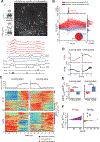
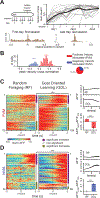
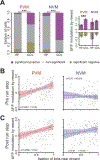
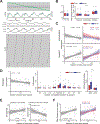
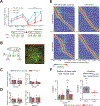

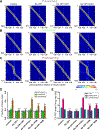
Comment in
-
Disinhibition Goes Spatial.Neuron. 2019 Mar 20;101(6):994-996. doi: 10.1016/j.neuron.2019.03.006. Neuron. 2019. PMID: 30897364
Similar articles
-
Mouse hippocampal CA1 VIP interneurons detect novelty in the environment and support recognition memory.Cell Rep. 2024 Apr 23;43(4):114115. doi: 10.1016/j.celrep.2024.114115. Epub 2024 Apr 11. Cell Rep. 2024. PMID: 38607918
-
Synaptic Mechanisms Underlying the Network State-Dependent Recruitment of VIP-Expressing Interneurons in the CA1 Hippocampus.Cereb Cortex. 2020 May 18;30(6):3667-3685. doi: 10.1093/cercor/bhz334. Cereb Cortex. 2020. PMID: 32080739 Free PMC article.
-
The Entorhinal Cortical Alvear Pathway Differentially Excites Pyramidal Cells and Interneuron Subtypes in Hippocampal CA1.Cereb Cortex. 2021 Mar 31;31(5):2382-2401. doi: 10.1093/cercor/bhaa359. Cereb Cortex. 2021. PMID: 33350452 Free PMC article.
-
Learning from inhibition: Functional roles of hippocampal CA1 inhibition in spatial learning and memory.Curr Opin Neurobiol. 2022 Oct;76:102604. doi: 10.1016/j.conb.2022.102604. Epub 2022 Jul 7. Curr Opin Neurobiol. 2022. PMID: 35810533 Free PMC article. Review.
-
Inhibitory microcircuit modules in hippocampal learning.Curr Opin Neurobiol. 2015 Dec;35:66-73. doi: 10.1016/j.conb.2015.06.010. Epub 2015 Jul 10. Curr Opin Neurobiol. 2015. PMID: 26176433 Review.
Cited by
-
Ultrafast simulation of large-scale neocortical microcircuitry with biophysically realistic neurons.Elife. 2022 Nov 7;11:e79535. doi: 10.7554/eLife.79535. Elife. 2022. PMID: 36341568 Free PMC article.
-
Neural circuit dynamics of drug-context associative learning in the mouse hippocampus.Nat Commun. 2022 Nov 7;13(1):6721. doi: 10.1038/s41467-022-34114-x. Nat Commun. 2022. PMID: 36344498 Free PMC article.
-
Breakdown of spatial coding and interneuron synchronization in epileptic mice.Nat Neurosci. 2020 Feb;23(2):229-238. doi: 10.1038/s41593-019-0559-0. Epub 2020 Jan 6. Nat Neurosci. 2020. PMID: 31907437 Free PMC article.
-
Neural dynamics underlying associative learning in the dorsal and ventral hippocampus.Nat Neurosci. 2023 May;26(5):798-809. doi: 10.1038/s41593-023-01296-6. Epub 2023 Apr 3. Nat Neurosci. 2023. PMID: 37012382 Free PMC article.
-
Targeted Activation of Hippocampal Place Cells Drives Memory-Guided Spatial Behavior.Cell. 2020 Dec 10;183(6):1586-1599.e10. doi: 10.1016/j.cell.2020.09.061. Epub 2020 Nov 6. Cell. 2020. PMID: 33159859 Free PMC article.
References
-
- Acsady L, Arabadzisz D, and Freund TF (1996a). Correlated morphological and neurochemical features identify different subsets of vasoactive intestinal polypeptide-immunoreactive interneurons in rat hippocampus. Neuroscience 73, 299–315. - PubMed
-
- Acsady L, Gorcs TJ, and Freund TF (1996b). Different populations of vasoactive intestinal polypeptide-immunoreactive interneurons are specialized to control pyramidal cells or interneurons in the hippocampus. Neuroscience 73, 317–334. - PubMed
Publication types
MeSH terms
Substances
Grants and funding
LinkOut - more resources
Full Text Sources
Molecular Biology Databases
Miscellaneous

